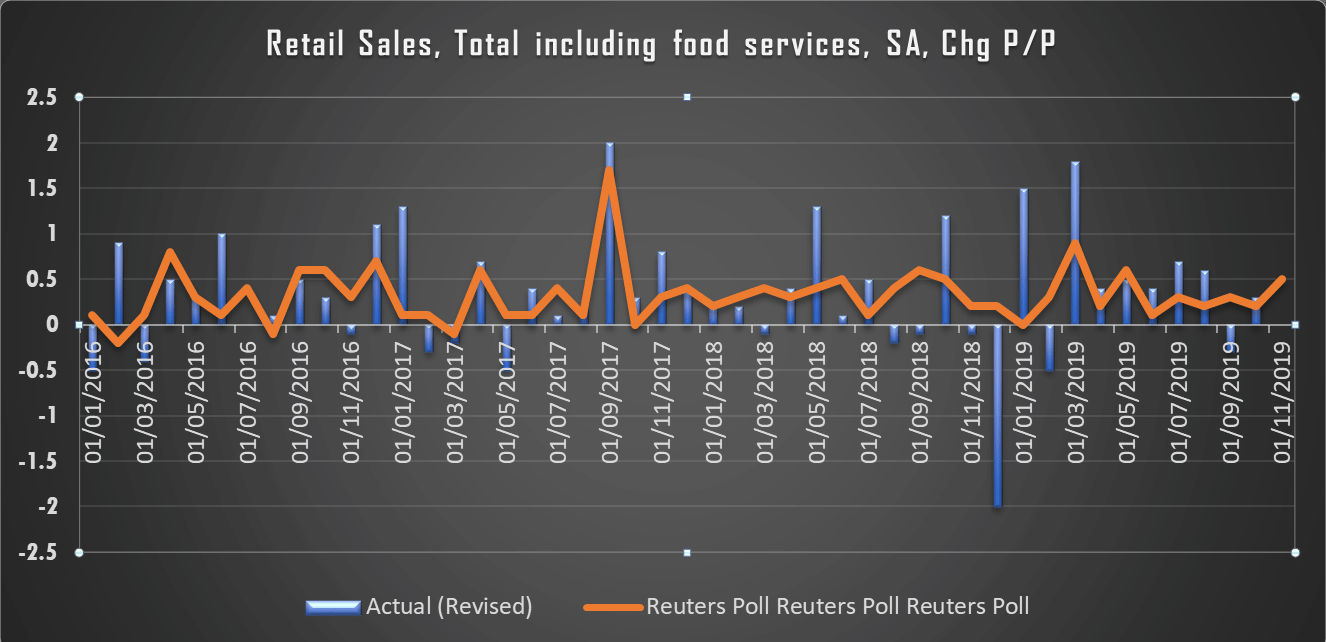The following article was prepared for LeapRate by the ATFX analysts team.
Markets are awaiting the release of the monthly change in the US retail sales, which is one of the most important periodic economic reports in the United States, It is also considered a reliable measure of inflationary pressures, Although the retail sales data is not under the spot light as the monthly nonfarm payrolls report, it still represents one of the most economic data examined by the Federal Reserve when looking at its monetary policy in the United States.
Where the data showed a rise in US retail sales by 0.3% in October 2019 compared to September sales, which was better than the average market expectation of 0.2%. A rebound in reading was driven by car sales as well as higher fuel prices, while purchases of household appliances and clothing were seen.
Average US retail sales were 0.35 percent from 1992 to 2019, when the this indicator reading reached an all-time high of 6.70% in October 2001, and a record low of -3.90% in November 2008 directly after the global financial crisis, but it is historically noticeable that the reading of November came positive, in the last twenty-seven years, the reading of November did not come more than five times in negative territory, the last negative reading was in November 2018.

Source: US Census Bureau / Reuters
But what is the retail sales report?
The Retail Sales report is statistical data reflects the total sales value from 13 major types of retailers, for example food and beverage stores to gas stations.
Here is the distribution of the different types of retailers included in the report with the relative weight of each of those sectors represented in the statistics:
- Automobile and parts dealers: 20.60%
- Food and beverage stores: 12.80%
- General Merchandise Shops: 12.60%
- Food and drinking services: 11.70%
- Gas stations: 8.2%
It is important to know the most volatile components in terms of change. For example, the prices of cars, gas and foodstuffs are strongly affected by the seasonality and the fundamental changes in the prices of raw commodities.
Other factors to be considered including political instability, high oil prices and even bad weather, which could weaken consumer confidence and translated to into lower spending.
